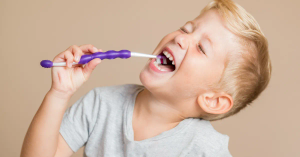Maintaining optimal oral hygiene is crucial for preventing dental issues like cavities, gum disease, and bad breath. For individuals with sensitive gums, traditional brushing methods can sometimes cause discomfort or even aggravate existing issues. This is where the circular brushing technique comes in—a gentle, effective method designed to clean teeth thoroughly without harming delicate gum tissue.
A Brief History of the Circular Brushing Technique
The concept of circular brushing dates back to the early developments in dental hygiene practices. It was popularized through the Bass brushing technique, introduced by Dr. Charles C. Bass, known as the “father of preventive dentistry.” While Dr. Bass focused on techniques targeting the gum line to prevent periodontal diseases, dental professionals later adapted these principles into the circular brushing technique, emphasizing gentle, circular motions to cater to individuals with sensitive gums.
Over time, dental health experts recognized that circular brushing reduces trauma to the gums while effectively removing plaque, making it a preferred choice for people with gum sensitivity, children, and those recovering from oral surgeries.
What is the Circular Brushing Technique?
The circular brushing technique involves using small, gentle, circular motions to clean the surfaces of the teeth and along the gum line. This method helps dislodge food particles, remove plaque, and stimulate the gums without applying excessive pressure that could lead to gum recession or enamel erosion.
It’s often recommended by dentists, especially for individuals with:
• Sensitive gums prone to bleeding or irritation
• Gum recession or periodontal issues
• Children learning proper brushing habits
• Post-surgical oral care needs
How is the Circular Brushing Technique Different from Other Methods?
| Aspect | Circular Brushing Technique | Horizontal Scrub Technique | Bass/Sulcular Technique |
| Motion | Gentle, small circular movements | Back-and-forth horizontal strokes | Vibratory, angled towards the gum line |
| Pressure | Light, minimal pressure | Often excessive, leading to enamel wear | Gentle, focused on gum pockets |
| Effect on Gums | Gentle, reduces risk of gum damage | Can cause gum irritation and recession | Excellent for gum health but requires precision |
| Ideal For | Sensitive gums, children, post-surgery care | Quick brushing, but less effective | Preventing gum disease in adults |
| Ease of Learning | Easy to learn and apply consistently | Easy but prone to improper technique | Requires professional guidance to master |
The circular brushing technique stands out for its gentle approach, making it safer for sensitive gums compared to the abrasive effects of the horizontal scrub technique. It also offers a simpler learning curve compared to the Bass technique, which requires precise angling and motion control.
How to Perform the Circular Brushing Technique (Step-by-Step Guide)
1. Choose the Right Toothbrush:
Opt for a soft-bristled toothbrush to avoid irritating sensitive gums. Electric toothbrushes with a circular head are also ideal for this technique.
2. Proper Positioning:
Hold the toothbrush at a 45-degree angle to the gum line. This allows the bristles to clean both the tooth surface and the gum margin effectively.
3. Start with Gentle Circular Motions:
Using small, gentle circular movements, brush the outer surfaces of your teeth. Focus on two or three teeth at a time before moving on.
4. Cover All Tooth Surfaces:
• Outer surfaces: Move from one side of your mouth to the other.
• Inner surfaces: Tilt the brush vertically for the front teeth and continue the circular motion.
• Chewing surfaces: Use a gentle back-and-forth motion here, as circular brushing is less effective on flat surfaces.
5. Don’t Forget the Gum Line:
Lightly brush along the gum line to remove plaque buildup without causing irritation.
6. Brush Your Tongue:
Gently brush your tongue to remove bacteria and freshen your breath.
7. Duration:
Brush for at least 2 minutes, spending around 30 seconds per quadrant of your mouth.
8. Rinse and Spit:
After brushing, rinse your mouth with water or an alcohol-free mouthwash for added freshness.
Why the Circular Brushing Technique is Ideal for Sensitive Gums
• Minimizes Gum Trauma: The gentle motion reduces the risk of gum injury, recession, and bleeding.
• Improves Plaque Removal: Effectively cleans along the gum line without aggressive scrubbing.
• Promotes Gum Health: Stimulates blood flow to the gums, promoting healthier tissue.
• Easy for Kids and Seniors: Simple technique that’s easy to master at any age.
• Adaptable: Suitable for both manual and electric toothbrushes.
Common Mistakes to Avoid
• Using Excessive Pressure: Light pressure is sufficient. Pressing too hard can damage enamel and irritate gums.
• Rushing the Process: Skimping on time reduces effectiveness. Aim for the full 2 minutes.
• Skipping Areas: Ensure all surfaces, including the inner sides of teeth, are brushed.
• Using Hard Bristles: Always choose soft bristles to protect sensitive gums.
Final Thoughts
The circular brushing technique is more than just a gentle approach—it’s an effective way to maintain oral hygiene without compromising gum health. Its simplicity makes it accessible to everyone, from children to adults with sensitive gums. By incorporating this technique into your daily routine, you can achieve cleaner teeth, healthier gums, and a brighter smile without the risk of irritation or damage.








